“Present day navigators are apt to place so much reliance on mechanical and tabular aids that we sometimes forget that primitive peoples were able to voyage over a large part of the world without any such devices. A study of these primitive methods shows that there are many valuable aids we have neglected or forgotten, and that a continued reliance on mechanical aids places us in a very helpless position when deprived of them. In the lore of the sea and the sky one can still find those fundamental and simple means which gave early man confidence and enabled him to find his way on the trackless seas.”
So wrote the 20th-century’s master navigator of both sky and sea, Harold Gatty (1903-1957), in his beguiling The Raft Book. Last fall, the United States Naval Academy reintroduced the requirement of a formal course in celestial navigation after an absence of nearly two decades from the curriculum. At that time, this nifty publication, its title and author unknown to me, needed to be cataloged for the National Air & Space Museum Library’s special collections.
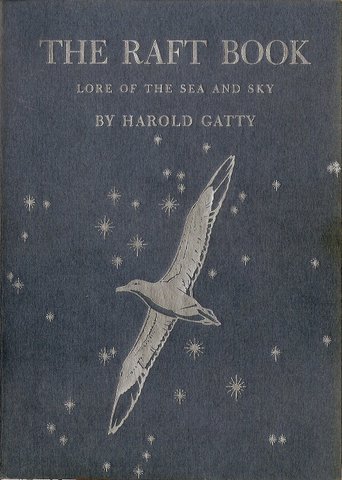
The book’s covers are blue heavy paper stock, embossed in silver with a majestic, soaring albatross upon a field of stars. Within its original slipcase are also two large folding leaves containing tables for navigation computations, scales for measuring distance (“Greenwich date and hour scales”) and a unique world-wide chart. What librarian could resist a survival book that first acknowledges one of its own, C. R. Taylor of the Alexander Turnbull Library in Wellington, New Zealand? Isn’t my profession all about navigating through an ocean of information?
While an interesting, well-illustrated, carefully thought-out, and concise specimen of book production, The Raft Book is both a training manual (on shore) and a survival guide (at sea). An errata slip in the first edition of 1943 states: “For service use in rafts and lifeboats the book will be waterproofed and will have spiral plastic binding. The book and charts will be contained in a waterproofed envelope.” It directs the reader to always carry a pocket watch set to Greenwich Time in order to determine longitude. How to protect that valuable piece?: “get a rubber sack (obtainable from pharmacist) for it and keep it dry.”
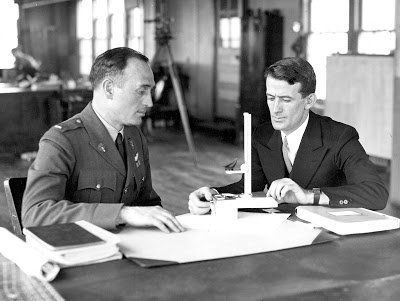
Gatty wrote The Raft Book here in Washington, D. C., at the behest of the U. S. Army Air Forces for pilots flying over the Pacific, and perhaps always with an eye toward others such as fishermen and sailors. He is the sole author and, with his (second) wife, the copyright holder, not the U. S. Government. Gatty was ideally suited for the task. He had first learned navigation as a midshipman at the Royal Australian Naval College and then celestial wayfaring by his own observations stargazing on long voyages. Landing in California, Gatty taught marine navigation to yachtsmen at his own school in Los Angeles before taking on the challenges of charting routes in the skies with both celestial navigation and dead reckoning. Philip Van Horn Weems became his mentor at his navigational school in San Diego and the two had a long collaboration.
Gatty was navigator to pilot Wiley Post during their world record circumnavigation of the globe in 1931. Touching down in Roosevelt Field on Long Island, having bested the 21-day record set by the airship Graf Zeppelin, they were feted with an exuberant ticker-tape parade that only New York City can provide. The two wrote Around the world in eight days: the flight of the Winnie Mae, with an introduction by Will Rogers. They rivaled Charles Lindbergh in popularity. Post, the high-altitude aviator in the Golden Age of Aviation who discovered the jet stream, and Rogers, humorist, writer, social commentator, and actor, were killed together in 1935 when their plane crashed in the Territory of Alaska.
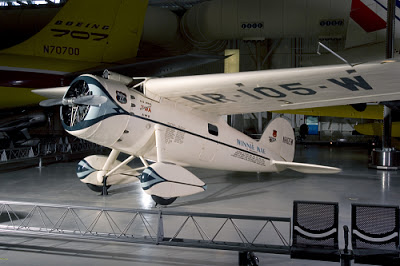
Not as well remembered today is the innovative, resourceful Gatty whom Lindbergh anointed the “Prince of Navigators.” Roscoe Turner, Anne Morrow Lindbergh, Clyde Pangborne, Howard Hughes, Arthur Goebel, Harold Bromley, and Pan American Airways all turned to Gatty for his expertise and advice. In 1932 he was appointed Senior Aerial Navigation Engineer for the U. S. Army Air Corps.
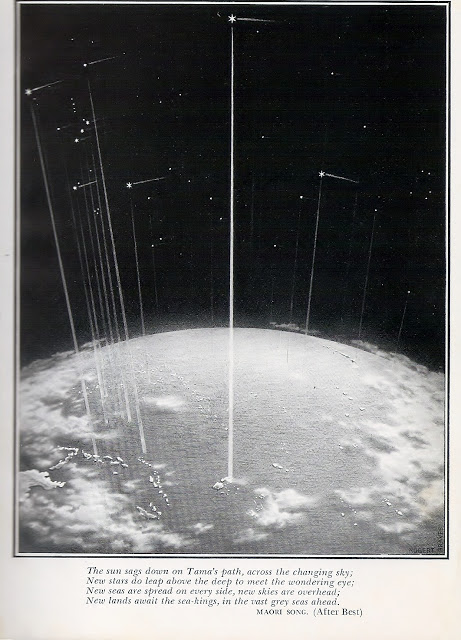
Of special value to the military at the start of World War II in the vast, still largely uncharted Pacific was Gatty’s long study of Polynesian seafaring skills over millennia. In The Raft Book, Gatty laid out simple and practical methods of determining location and charting a course to shore in a lifeboat or dinghy without a map and compass. The book describes how Polynesians viewed the stars as moving bands of light. “They knew the stars which passed over particular islands, and used these stars as heavenly beacons to lead them to their destination.” Along with the ability to measure distance from the Equator by either the North Star or the Southern Cross and other celestial bodies, the author explains how all the senses were to be employed for survival with the “lore of the sea and sky.”
For example, Gatty describes how seafarers should pay attention to the light at dawn, the appearance of clouds, and the currents and wave patterns of the ocean. In addition, familiarity with the habits of sea and land birds, fishes and insects can be used as navigational aids, and will enable a hungry castaway to more easily catch these creatures for food when necessary. Less obvious senses can have an essential role in survival on the ocean, as well. Such as being alert to scent: “I have personally experienced the fragrance of new-mown hay 80 miles off the New Zealand coast in the springtime.” And sounds from land: “The roar of heavy surf may be heard long before the shore is seen. At night, the continued cries of sea-birds from one particular direction will signify their roosting place on land.” Looking at the directions of the wind, waves, and swells, can also be aids for a castaway. Understanding the color of the sea and even testing the temperature of the water with one’s fingers are also part of the “lore” in the book.

Other editions of The Raft Book—in a smaller type, with fewer of the colored plates, less of a lyrical cover, and waterproofed—soon became part of the survival kits of all Allied airmen serving in the Pacific Ocean theater. The publication portrays the world’s oceans not as indifferent or hostile but teeming with life, with routes voyaged for centuries by many cultures, including the Phoenicians, the Arabians, and the Vikings. Gatty conveyed his deep knowledge of using the sea and sky and their movements to find one’s way to land, interspersed with quotes from Shakespeare, Dante, and William Cullen Bryant, not at all pretentiously but to underline a particular lesson.
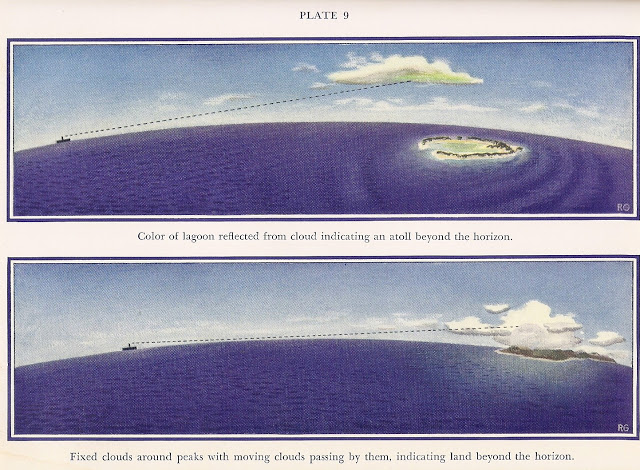
Now do I lay the bows of my canoe
To the rising of the Sun, nor deviate from there
Straight to the land, to the Fatherland
Ancient Maori Karakia
Post-war, Gatty continued to chart his own course in life. Despite various U. S. military appointments and honors, he kept his Tasmanian citizenship (Congress had to pass special bills to accommodate his request to remain an un-naturalized citizen despite his official positions). Gatty found his way to Fiji, where he owned the island of Katafanga, ran a plantation, served in the Legislature, created Fiji Airlines, and continued to study ancient wayfaring. Gatty’s last work, Nature is your guide, was published posthumously. He died of a cerebral hemorrhage in August 1957.
Gatty’s The Raft Book, as perhaps the U. S. Navy has discovered, is still relevant today as we have become ever-more reliant on high-tech instruments, on land in a car, out at sea in a boat, and in the skies in an aircraft. Increasingly dependent on sophisticated but vulnerable technology, know that one can still be one’s own navigator.
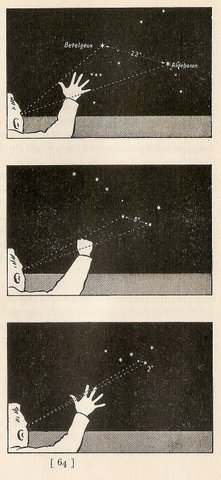
Further reading:
Johnston, Andrew K., Roger D. Connor, Carlene E. Stephens, and Paul E. Ceruzzi. Time and navigation: the untold story of getting from here to there. Washington, D.C.: Smithsonian Books, 2015.
Charting a new course: celestial navigaton returns to USNA
US Army Air Corps Avigation Training
This post first appeared on the Smithsonian Collections Blog on February 11, 2016.

11 Comments
A must read for those looking to better understand the naval science. Navy and Marine historic foundations told through the lives of great and not so great men. Before you start this book make sure you have all day, I did not put this down till finished.
Definitely not a learning manual though certainly worth reading is Joshua Slocum’s Sailing Alone Around the World. He was the first to do so in a boat he rebuilt nearly in its entirety during the 1890s. A fascinating memoir.
Hi Meredith,
Smithsonian Libraries has a first edition of “Sailing Alone Around the World” with an interesting association. Read about it here:
http://si-siris.blogspot.com/2014/09/joshua-slocum-and-smithsonian.html
For land lubbers Gatty’s book “How to navigate without map or compass” is excellent. Much more than a guide to which side of trees moss grows on (in fact if you think you know moss, Gatty tells how it can get you lost) it is rich in observations both natural (such as the origin of pink snow) and psychological (such as noting that if we are dis-oriented when first coming into a place, we will remain so on subsequent visits) that enriches my life even without getting lost.
Thanks for the valuable info.
Personally, I like the book “How to Navigate without map or compass”. It clearly shows what I want to read, and the language is fine to me.
And, yes, I agree with you that Gatty’s The Raft Book is still relevant after so many years.
Is “The Raft Book:Lore of the Sea and Sky” available as a reprint or Kindle? I can’t find it anywhere.
Hi John,
It looks like you can find vintage copies via rare books dealers. However, you can also see if a copy exists in a library near you (or is available through interlibrary loan): https://www.worldcat.org/title/raft-book-lore-of-the-sea-and-sky/oclc/908134676&referer=brief_results
Best,
Erin Rushing
Outreach Librarian
Hi John, no it is still in copyright. There are several editions of “Nature is Your Guide” (the title varies) which includes many aspects of “The Raft Book.” Paperback editions can be found inexpensively on second-hand book sites or in libraries. Julia
When you search for Gatty’s raft book you sometimes find the slipcased raft book described here, and rarely, you find the concise waterproofed edition that was actually included in the WW2 raft survival kits. The latter don’t have covers, and they have fold lines down the middle from the way they were originally packaged. “Nature is Your Guide” includes both expanded information on natural navigation at sea not found in “The Raft Book”, and also the shortened descriptions of the birds written for the survival kits. “Nature is Your Guide” has lots of additional information about land navigation, but it doesn’t include the maps, and only one of the charts from “The Raft Book”.
I use it to teach certain aspects of geography. The most valuable tools in the book are the map with overhead stars positioned as if looking above them and the time tape to measure off your positions under the stars. A genius was needed to show us the beauty of this type of navigation
A genius agreed! The author of this article seemed to be reviewing the first edition, which had a world base map and a see through overlay map of the stars. This proved too cumbersome to be used on a raft. So for the second edition, which was rapidly published just after the first, Gatty created the map you describe, and a treated paper ruler to shift the stars for the dates you were adrift. Brilliant.